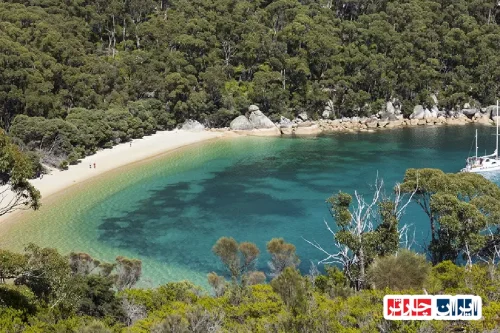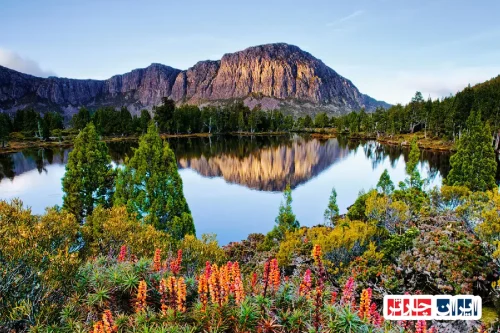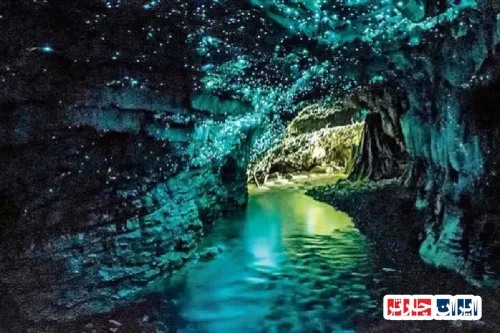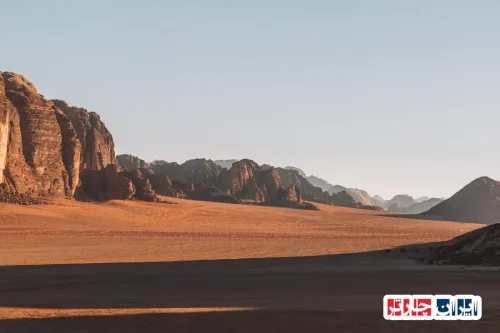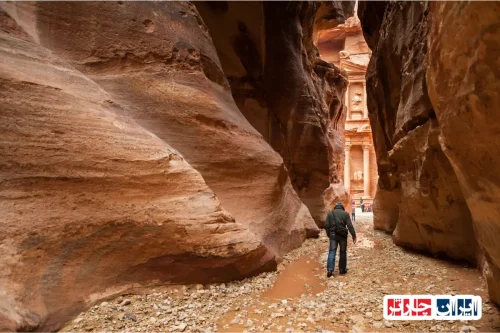Discover the Natural Beauty and Cultural Heritage of Tidbinbilla Nature Reserve in the Australian Capital Territory
Located in the heart of the Australian Capital Territory, the Tidbinbilla Nature Reserve stands out as a premier destination for nature lovers and those interested in exploring Australia’s rich biodiversity and indigenous history. This expansive protected area offers visitors a unique opportunity to experience pristine wilderness, encounter rare and threatened species, and learn about the cultural significance of the land to the local Aboriginal communities. Whether you’re seeking a family-friendly adventure, challenging hikes, or educational experiences, Tidbinbilla provides a diverse range of activities and scenic vistas that showcase the natural splendor of Australia’s capital region. The reserve is renowned for its well-maintained walking trails, vibrant wildlife, and informative visitor centers that highlight the importance of conservation efforts. By exploring this remarkable landscape, visitors can gain a deeper appreciation for Australia’s ecological diversity and cultural heritage, making Tidbinbilla a must-visit destination for anyone eager to connect with nature and history in the Australian Capital Territory.
Tidbinbilla Nature Reserve-Iran Charter
Discover the Rich History and Cultural Significance of Tidbinbilla Nature Reserve in the Australian Capital Territory
Tidbinbilla Nature Reserve, located in the heart of the Australian Capital Territory, boasts a rich history dating back thousands of years. This protected area has been a sacred site for the Ngunnawal people, who have maintained a deep spiritual connection with the land through ancient ceremonies and traditions. Archaeological sites, including rock art and ancient tools, highlight the enduring cultural heritage preserved within the reserve. Visitors can explore these historical landmarks to gain insight into the indigenous history that shaped the region’s identity. The reserve continues to serve as a vital cultural hub, hosting educational programs and cultural events that celebrate its Aboriginal roots. Protecting this heritage ensures future generations can appreciate the profound link between the land and its original inhabitants. Engaging with the history of Tidbinbilla offers a meaningful experience that underscores the importance of preserving cultural and natural legacies in the Australian Capital Territory. This site exemplifies how natural landscapes and indigenous history intertwine, creating a unique cultural tapestry. Preserving these stories is essential for understanding the region’s identity and fostering respect for Aboriginal traditions. Today, the reserve stands as a testament to the enduring cultural connections and the importance of safeguarding indigenous heritage in Australia.
Unique and Threatened Wildlife Species of Tidbinbilla Nature Reserve in the Australian Capital Territory
Tidbinbilla Nature Reserve is a sanctuary for numerous rare and threatened species endemic to Australia. Among these, the Northern Corroboree Frog is critically endangered, with conservation efforts focused on habitat restoration and breeding programs. The reserve also provides a habitat for the Mountain Pygmy Possum and the Eastern Bettong, species that face threats from habitat loss and climate change. These animals symbolize the importance of protecting Australia’s unique biodiversity. Conservation initiatives include habitat management, predator control, and community engagement to ensure the survival of these species. Visitors can participate in guided tours and educational activities that highlight the significance of conserving threatened wildlife. The reserve’s efforts contribute to national and global biodiversity goals, emphasizing the need for ongoing protection of vulnerable species. By supporting conservation programs, visitors help safeguard Australia’s natural heritage for future generations. The presence of these rare animals underscores the ecological value of Tidbinbilla and the critical role it plays in maintaining biodiversity. Protecting these species not only preserves their existence but also sustains the ecological balance of the region. The reserve remains a vital refuge for Australia’s most endangered wildlife, inspiring conservation awareness among all visitors.
Top Hiking and Walking Trails to Explore the Pristine Wilderness of Tidbinbilla in the Australian Capital Territory
Family-Friendly and Easy Trails
Within Tidbinbilla Nature Reserve, a variety of accessible trails cater to families and casual walkers. These flat, well-maintained paths provide an opportunity to enjoy the scenic beauty of the Australian wilderness without strenuous effort. Popular routes include the Tidbinbilla Nature Trail, which offers a gentle walk through lush forests and grasslands, ideal for children and seniors. Along the way, visitors can spot native wildlife such as kangaroos, wallabies, and various bird species. These trails are perfect for educational outings, allowing families to learn about local flora and fauna in a safe environment. Rest areas and picnic spots are conveniently located along these routes, making them suitable for a relaxing day in nature. Proper footwear, sun protection, and water are recommended to ensure a comfortable experience. These family-friendly trails serve as an excellent introduction to the natural wonders of the region, fostering appreciation for conservation efforts. They also provide a peaceful escape from urban life, encouraging outdoor activity and environmental awareness. Exploring these easy paths allows visitors to connect with nature and create lasting memories with loved ones.
Challenging and Longer Hikes for Adventure Seekers
For experienced hikers and adventure enthusiasts, Tidbinbilla offers challenging trails that reward climbers with breathtaking panoramic views. The Gibraltar Peak Track is renowned for its steep ascent and spectacular vistas of the surrounding landscape. This trail requires good physical fitness, appropriate gear, and preparation, but the effort is well worth the reward of observing the expansive scenery from the summit. Other demanding routes include the Mount Tennent Track, which traverses rugged terrain and dense bushland, providing a true wilderness experience. These trails are ideal for those seeking solitude and a deeper immersion into nature’s untouched beauty. Safety precautions, such as carrying maps, sufficient water, and informing someone about your plans, are essential. The challenging hikes not only test physical endurance but also offer a sense of achievement and connection with the pristine environment. They are perfect for nature lovers looking to explore the more remote and spectacular parts of Tidbinbilla. Respect for the land and wildlife during these hikes ensures the preservation of the natural integrity of the reserve for future explorers.
Conservation Efforts and the Role of Tidbinbilla in Protecting Endangered Species in Australia
Tidbinbilla Nature Reserve plays a crucial role in the conservation of Australia’s endangered species through targeted programs and habitat management. Breeding projects for species like the critically endangered Northern Corroboree Frog have achieved notable success, with captive breeding and reintroduction efforts helping to bolster wild populations. The reserve also implements predator control measures, such as fox and feral cat management, to protect vulnerable native animals. Habitat restoration initiatives focus on restoring native vegetation and creating safe corridors for wildlife movement. These efforts are supported by scientific research, community involvement, and government partnerships dedicated to biodiversity preservation. Visitors can learn about these conservation projects through interpretive displays, guided tours, and volunteer opportunities. The reserve’s proactive approach exemplifies how protected areas can serve as vital refuges for species at risk of extinction. By safeguarding these animals and their habitats, Tidbinbilla contributes significantly to Australia’s national biodiversity targets. The ongoing commitment to conservation ensures that future generations will continue to experience the richness of Australia’s unique wildlife. Supporting these initiatives helps maintain ecological balance and promotes sustainable coexistence with nature.
Educational and Cultural Programs for Families and Visitors at Tidbinbilla
Interactive Workshops and Cultural Events
Tidbinbilla Nature Reserve offers engaging educational programs designed for families and school groups. Interactive workshops focus on wildlife conservation, indigenous history, and environmental stewardship, providing hands-on learning experiences. Children can participate in activities such as wildlife tracking, art projects, and storytelling sessions that highlight the cultural significance of the land. Cultural events, including traditional Aboriginal ceremonies and storytelling nights, deepen visitors’ understanding of the Ngunnawal people’s heritage. These programs foster respect for indigenous traditions and promote awareness of the importance of preserving cultural and natural assets. Expert guides and educators facilitate discussions, making complex topics accessible and inspiring a sense of responsibility towards conservation. The reserve’s educational initiatives aim to instill environmental values in young minds, encouraging future stewardship. Family participation in these activities creates meaningful connections with the land and its history, enriching the visitor experience. By integrating culture and ecology, Tidbinbilla nurtures a holistic appreciation of Australia’s natural and cultural diversity.
Community Engagement and Special Events
Throughout the year, Tidbinbilla hosts special events such as wildlife festivals, native plant days, and indigenous art exhibitions. These gatherings promote community involvement and celebrate the region’s natural and cultural heritage. Visitors can enjoy guided nature walks, craft workshops, and performances by local artists, fostering a sense of belonging and shared responsibility. Educational talks by conservation experts highlight ongoing projects and ways to contribute to protecting the environment. These events serve as platforms for raising awareness about biodiversity and indigenous culture, encouraging active participation. Families and individuals alike can take part in volunteer programs, helping with habitat restoration and wildlife monitoring. The vibrant community activities strengthen the connection between visitors and the land, ensuring the legacy of conservation and cultural preservation endures. Participating in these programs not only enriches the visitor experience but also supports the long-term sustainability of the reserve’s natural and cultural assets. Engaging with the local community helps foster a collective effort to protect Australia’s unique heritage for generations to come.
Stunning Natural Landscapes and Breathtaking Views Around Tidbinbilla
The landscape surrounding Tidbinbilla Nature Reserve is a showcase of Australia’s diverse natural beauty. Towering mountain peaks, lush forests, and tranquil water bodies create a picturesque setting for outdoor exploration. The scenic vistas from the summit of Gibraltar Peak offer sweeping views of the ACT and beyond, making it a favorite spot for photographers and nature lovers. The reserve’s varied terrain includes dense eucalyptus woodlands, open grasslands, and rocky outcrops, each supporting unique ecosystems. These landscapes provide habitat for a wide array of wildlife, from kangaroos and wallabies to numerous bird species. Visitors can enjoy the serenity of the natural environment, whether through a leisurely walk or a more vigorous hike. The area’s natural beauty is complemented by the peaceful sounds of native birds and the sight of native flora in full bloom. Preserving these landscapes is essential for maintaining biodiversity and providing a sanctuary for future generations to experience Australia’s wilderness. The breathtaking scenery inspires awe and deepens appreciation for the country’s ecological richness. Protecting these landscapes ensures that their beauty and ecological value remain intact for years to come.
Essential Tips for Planning Your Visit to Tidbinbilla in the Australian Capital Territory
To make the most of your trip to Tidbinbilla Nature Reserve, careful planning is key. Check the weather forecast and choose the best season for your visit, typically spring or autumn, for mild weather and vibrant scenery. Wear comfortable, sturdy footwear suitable for walking or hiking, and pack essentials such as water, sun protection, and insect repellent. Familiarize yourself with the trail maps and select routes that match your fitness level and interests. Arrive early to avoid crowds and secure parking, especially during peak times. Respect the natural environment by staying on designated paths, not disturbing wildlife, and carrying out all trash. If visiting with children, ensure safety by supervising them closely and providing age-appropriate activities. Consider joining guided tours or educational programs to enrich your experience. Planning ahead ensures a safe, enjoyable, and environmentally responsible visit, allowing you to fully appreciate the beauty and significance of Tidbinbilla. Remember to adhere to all park regulations and support conservation efforts through responsible behavior. With proper preparation, your trip will be memorable and impactful, fostering a deeper connection with Australia’s natural heritage.

Frequently Asked Questions about Tidbinbilla Nature Reserve in Australia
- What is the historical significance of Tidbinbilla Nature Reserve?
- Tidbinbilla has a rich indigenous history, serving as a sacred site for the Ngunnawal people for thousands of years. Archaeological findings such as rock art and ancient tools highlight its cultural importance. The reserve preserves these heritage sites, offering visitors a glimpse into the indigenous traditions and spiritual connection to the land. It continues to host cultural events and educational programs that celebrate Aboriginal heritage, ensuring that these stories are passed down to future generations.
- What rare wildlife species can be found in Tidbinbilla?
- The reserve is home to several threatened species endemic to Australia, including the critically endangered Northern Corroboree Frog. Other notable animals include the Mountain Pygmy Possum and the Eastern Bettong. Conservation efforts focus on habitat restoration, predator control, and breeding programs to protect these unique species. Visitors can learn about these initiatives through guided tours and educational displays, supporting the preservation of Australia’s biodiversity.
- What are the best trails for hiking in Tidbinbilla?
- Tidbinbilla offers a variety of trails suitable for all levels. Family-friendly paths like the Tidbinbilla Nature Trail provide easy walks through lush forests and grasslands, perfect for children and seniors. For adventure seekers, challenging routes such as Gibraltar Peak Track and Mount Tennent Track offer steep ascents and panoramic views, requiring good fitness and preparation. These trails allow visitors to experience the pristine wilderness and enjoy breathtaking scenery.
- How does Tidbinbilla contribute to conservation efforts?
- The reserve plays a vital role in protecting endangered species through breeding programs, habitat management, and predator control. Successful projects include captive breeding and reintroduction of species like the Northern Corroboree Frog. Habitat restoration initiatives focus on native vegetation and wildlife corridors. Community involvement and scientific research support these efforts, making Tidbinbilla a key refuge for Australia’s vulnerable wildlife and a model for conservation practices.
- What educational programs are available at Tidbinbilla?
- There are interactive workshops, guided tours, and cultural events designed for families and school groups. Programs focus on wildlife conservation, indigenous history, and environmental stewardship. Children can participate in activities like wildlife tracking and storytelling, while adults can attend cultural ceremonies and expert-led talks. These initiatives foster awareness and respect for indigenous traditions and natural heritage, enriching the visitor experience.
- What community activities and events are held at Tidbinbilla?
- The reserve hosts wildlife festivals, native plant days, and indigenous art exhibitions throughout the year. These events promote community engagement and celebrate the region’s natural and cultural assets. Visitors can join craft workshops, nature walks, and volunteer programs for habitat restoration. Such activities strengthen the connection between visitors and the land, ensuring ongoing conservation and cultural preservation.
- What are the most scenic spots around Tidbinbilla?
- The landscape features mountain peaks, lush forests, and tranquil water bodies. Gibraltar Peak offers sweeping views of the ACT and beyond, ideal for photography. The diverse terrain includes eucalyptus woodlands, rocky outcrops, and grasslands, supporting unique ecosystems. These natural landscapes provide peaceful settings for walking, hiking, and wildlife observation, emphasizing the ecological richness of the area.
- What tips should I consider before visiting Tidbinbilla?
- Plan your trip during spring or autumn for mild weather. Wear sturdy footwear, bring water, sun protection, and insect repellent. Check trail maps and choose routes suitable for your fitness level. Arrive early to avoid crowds and secure parking. Respect the environment by staying on designated paths and not disturbing wildlife. Participating in guided tours and educational programs can enhance your experience. Proper preparation ensures a safe, enjoyable visit while supporting conservation efforts.
- Are there facilities and amenities available at Tidbinbilla?
- Yes, the reserve offers visitor centers, picnic areas, and well-maintained walking trails. Rest spots and interpretive displays are available to enhance understanding of the local flora, fauna, and indigenous culture. Parking facilities are accessible, and there are amenities for families, including playgrounds and shaded areas. Visitors are encouraged to leave no trace and help preserve the natural beauty of the reserve.
- How does Tidbinbilla support indigenous communities?
- The reserve actively promotes indigenous culture through storytelling, cultural ceremonies, and art exhibitions. It collaborates with local Ngunnawal people to share their heritage and traditional knowledge, fostering respect and understanding. Educational programs highlight the significance of indigenous land management practices, ensuring that cultural traditions are preserved and celebrated within the park’s activities.
- What is the best time of year to visit Tidbinbilla?
- The ideal seasons are spring and autumn when the weather is mild, and the scenery is vibrant. Spring brings wildflowers and active wildlife, while autumn offers cooler temperatures and colorful foliage. Summer can be hot, and winter may bring cooler temperatures and rain, but each season offers unique experiences. Planning your visit according to your interests and weather preferences will maximize enjoyment.
- Can I camp or stay overnight in Tidbinbilla?
- Camping facilities are available within the reserve, allowing visitors to experience the natural environment overnight. Campsites are equipped with basic amenities, and booking in advance is recommended. Staying overnight provides an opportunity to explore the area more deeply, enjoy star gazing, and participate in early morning wildlife activities. Always follow park guidelines to ensure safety and preservation of the habitat.
- What should I do to ensure responsible tourism at Tidbinbilla?
- Respect wildlife by observing from a distance and not feeding animals. Stay on designated trails to prevent habitat damage. Carry out all trash and avoid disturbing cultural sites. Support local conservation initiatives and educational programs. Being mindful of your impact helps preserve the natural and cultural integrity of the reserve for future visitors.








